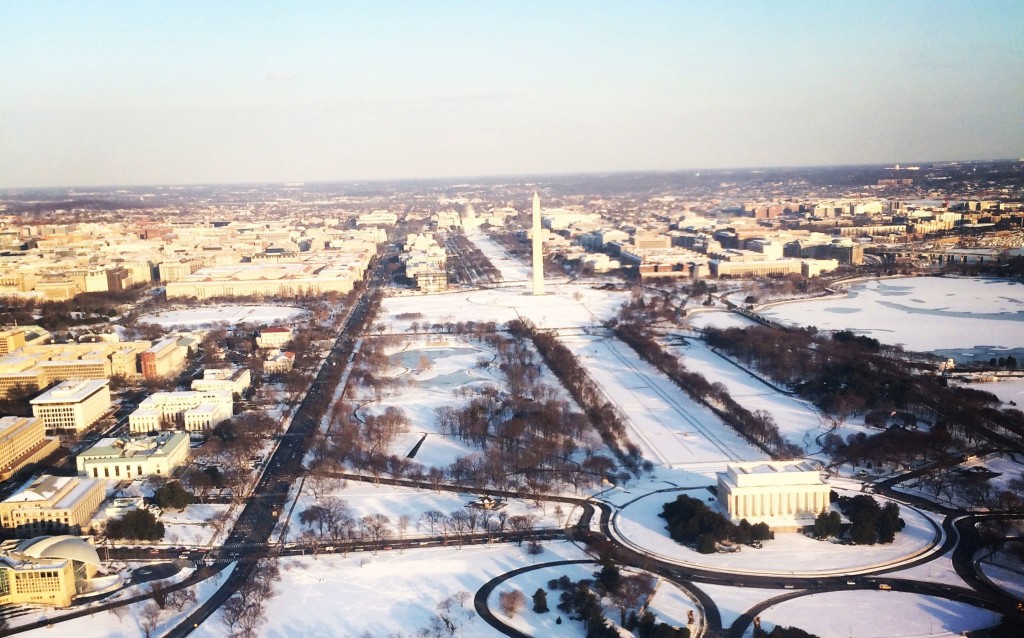
Life just about comes to a complete halt when snowfall hits the American capital. Germans, and others, can only look on with wide eyes, and see how everything happens differently from in Germany. You’ll read here about 20 differences between winter’s intrusions in Washington, D.C. and Frankfurt am Main.
Jeez, snow again in the American capital. Locals call it “Dissi”, from D.C., which stands for District of Columbia. It comes after the “Washington” and is said lightning fast. A bit like Bond, James Bond. So it would be a bit like “I’m from D.C., Washington D.C.”. It looks better in English as “D.C.”, since “Dissi” sounds more like “peepee” to German ears.
So, what’s it like when it snows in D.C.? My oldest kid summed it up as “Snow-pocalypse!” After three winters in the area, I still can’t get used to it. Whereas the first winter storm in 2016 broke all records, snowing non-stop for 30 hours, most of the time one inch of powder on the streets is usually a reason to panic and close the schools!
20 Differences Between Winter in Germany and the US
My winter experience in the US is limited to D.C.. Americans have told me that somewhere in between the capital and New York, there is an invisible line that is supposed to separate the North from the South. The first winter that Obama spent in the capital city, 417 schools were closed right at the start of winter. You can read here about the chuckle he had at the press conference.
Why does daily life come to a standstill here? And what do Washingtonians do differently and better than Frankfurters? I have compiled a list of 20 differences in winter between Frankfurt and Washington D.C. Here they are:
Difference #1
Public life stops immediately with just 5 cm (2 inches) of snow. Streets are cleared late, schools close or just don’t open to begin with, while residents start hoarding supplies before the so-called storm hits.
Difference #2
Washingtonians never learn from the past. The principal at the German School Washington measured 1.8 m (6 feet) of snow between November 2013 and March 2014. You would think that eventually they’d be on top of the situation, right? But, no, the next snowstorm comes and they are completely overwhelmed and running amok. See Difference #1.
Difference #3
The schools and government close as soon as it snows. Have you ever had your kids stay home from school in Frankfurt, because it was snowing? Or supposed to snow? Or it had snowed? Paradoxically, industry managers expect that their employees will make it to the office despite the bad weather. Not exactly convenient, when your kid has to stay at home.
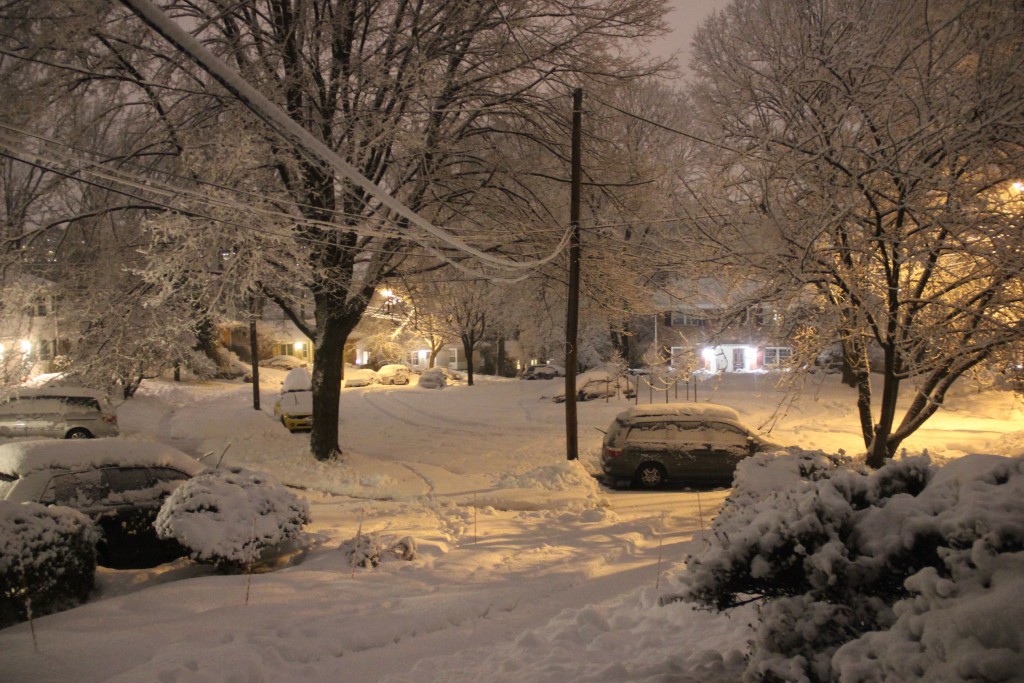
Difference #4
Washington isn’t in the far north of the US. It’s 700 km (430 miles) to Boston and over 1,000 km (620 miles) to Chicago. The weather conditions in winter are a lot harder there than they are here. I just don’t get why Washington doesn’t learn something practical from their years of experience. Lots of people say that these hard winters in D.C. are too uncommon and it’s not worth it to invest in winter preparation. Think about that: the winter of 2013/2014 was hard. My oldest daughter had 9 “snow days” off of school. So far this year, it’s already been two days, plus four days where school had a two-hour delay.
Difference #5
With or without equipment, they have enough road salt and spread it so thickly that even after a storm the streets are white as snow due to all the dried salt. There is no thought given to the ground water or the lawns. I’ve only ever seen de-icing salt in D.C.. I have never once seen a mixture of sand or grit.
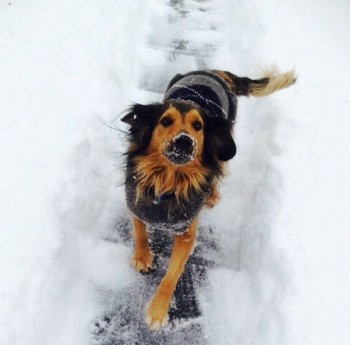
Difference #6
Poor dogs. There is even salt on the sidewalks. There is no way to avoid it. Quite a few cities in Germany prohibit the use of de-icing salt on sidewalks or t hey only allow it in extreme weather. Since there is not much concern for nature, environment, or animals here, dogs either need to stay at home or go on walks with a thick layer of Vaseline on their paws.
Difference #7
Roads are salted after the snowstorm. Not before. And not when it’s been forecast. Like I said, the previous snowstorm had been announced days in advance. Saturday morning at 10:30 am, it started to snow heavily and it only stopped in the evening around 8:00 pm. Since the temperature has been down around -15°C (5°F), the snow sticks around. There wasn’t any salting on the highways around D.C. The result? Lots of accidents and numerous backups.
Difference #8
The weather forecasts are often a bit off. A Snow-pocalypse is predicted when the sidewalks aren’t even white with snow! This topic has been widely covered. In this article from National Geographic, you can read about how European weather forecasts are consistently better than American forecasts.
Difference #9
Wind chill advisories are often indicated in forecasts here. Either it’s more common here than it is in Frankfurt or the matter just hasn’t arrived in Germany. Either way, I’ve only heard it a few times in German weather forecasts.
Difference #10
Bostonians love to mock the atmosphere of panic that sets in when D.C. has a snowstorm. I’ve never seen Munich smirking when Hamburg gets snow. It’s true that Washington hasn’t gotten the snow that Boston has this year. Boston has been taken by surprise by several snowstorms. There are walls of snow over 2 meters (6.5 feet) tall on the sides of the streets in Boston, but life goes on.
Difference #11
Cars here are not equipped for the bad weather. I’m talking about D.C., not Boston. No one has snow tires and automatic transmissions are just as bad. You can’t shift into a higher gear to get a better grip on the snow. Although, honestly, that probably wouldn’t help with the way Americans drive in the first place.
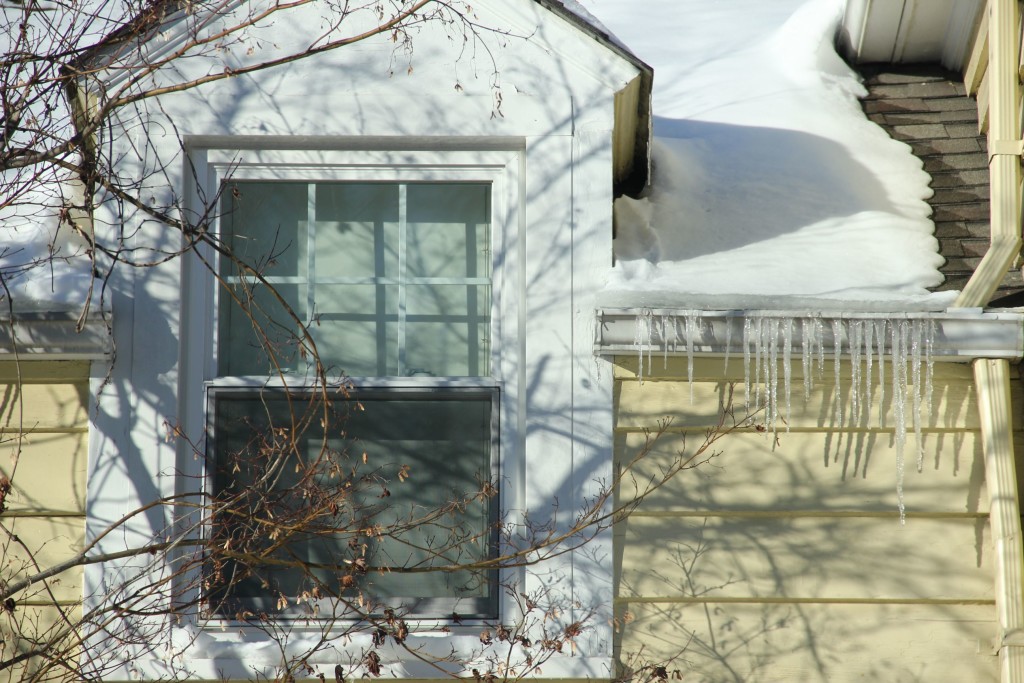
Difference #12
Houses are poorly insulated. Cold weather in D.C. isn’t just stressful when you’re outside. When we came into the house in Germany, we felt immediately comfortable. It was warm and welcoming. Every time I come home here, I wonder if the heating system is broken. It’s not. The heat vanishes under the doors, through the windows, and the walls are ice-cold. Result: Americans overheat their homes to keep them warm.
Difference #13
Footwear for bad weather in D.C.? Either regular shoes or … rubber boots! During my first winter in the USA, I had tried to buy sturdy, warm shoes for my little ones, who were 2 and 4 years old at the time. It was a failure! There are sneakers, sneakers, or sneakers. To this day, I still haven’t seen proper walking shoes in any shoe stores. There have got to be other shoes available in the North, right?
Difference #14
Children here don’t do a lot of walking, if at all. School buses pick up kids almost directly in front of their front door and drop them off at the school. For this reason, children here don’t dress nearly as warmly as German children. If I need to drive my son to school in the mornings, I see the school patrols standing at the intersections in front of the school. Hat? Scarf? Mittens? Half of them aren’t dressed warm enough for my tastes.
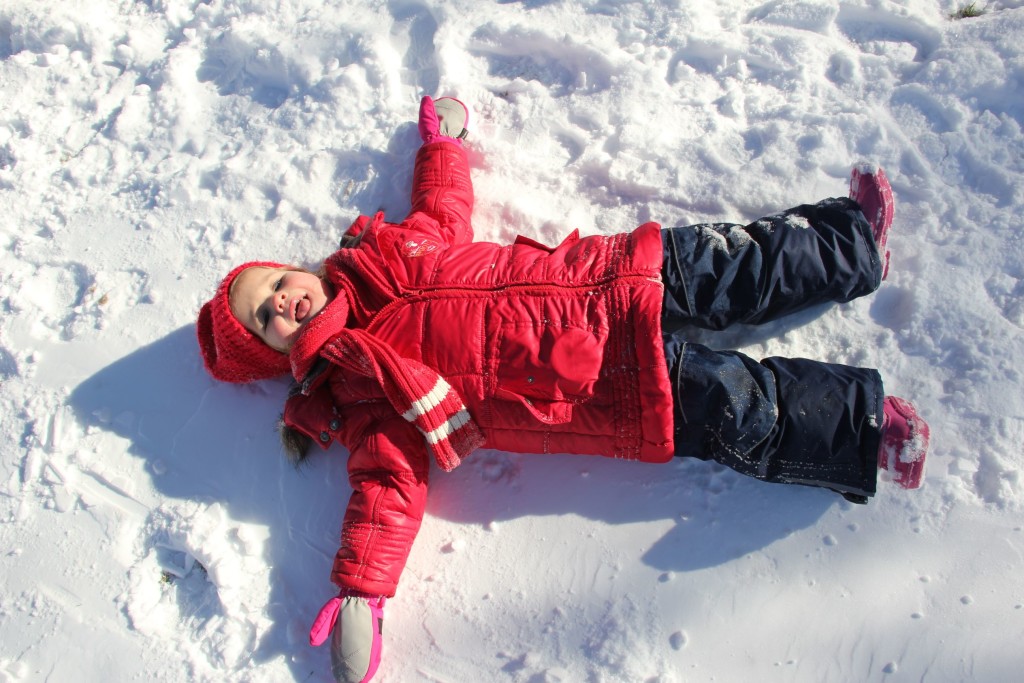
Difference #15
My nearly four-year old daughter attends an American daycare. My 5-year-old goes to an American elementary school. Last winter, there hasn’t been any recess outdoors. It’s too cold. Here, “cold” is under 5°C (41°F). Oh my God, the poor things, they might get cold. Well, just see #13. Ever heard of that? There is no bad weather, only the wrong clothing.
Difference #16
Everything in the US is larger than in Germany. It’s the same with the snow. The region that gets snow is almost always larger than it is in Germany. It can snow from Hamburg to Berlin, but not in Munich. If it snows in D.C., then it goes to Boston and the Canadian border. That area is twice as large as Germany.
Difference #17
On one hand, Washingtonians are total cowards when it starts snowing. On the other hand, they’re absolutely hardcore when it comes to staying fit. Jogging in arctic temperatures? In snow? I have seen everything: young, old, men, women, they just keep running and they only wear an extra layer. Or just a hat!
Difference #18
The snowplows will clear even our little cul-de-sac. It’s really great. A side street in Frankfurt just can’t compare. They don’t come right away and it can take a day, but when they’re done with the main street, we see and hear them, with their rotating, orange light, looping beep. Welcome, snowplow!
Difference #19
Information regarding public transportation during inclement weather is a lot better here than in Frankfurt. Websites, real-time apps, Twitter, and even emails provide reliable information. Usually, the buses keep going, whether with longer delays or less frequency. But you know when the next bus is coming!
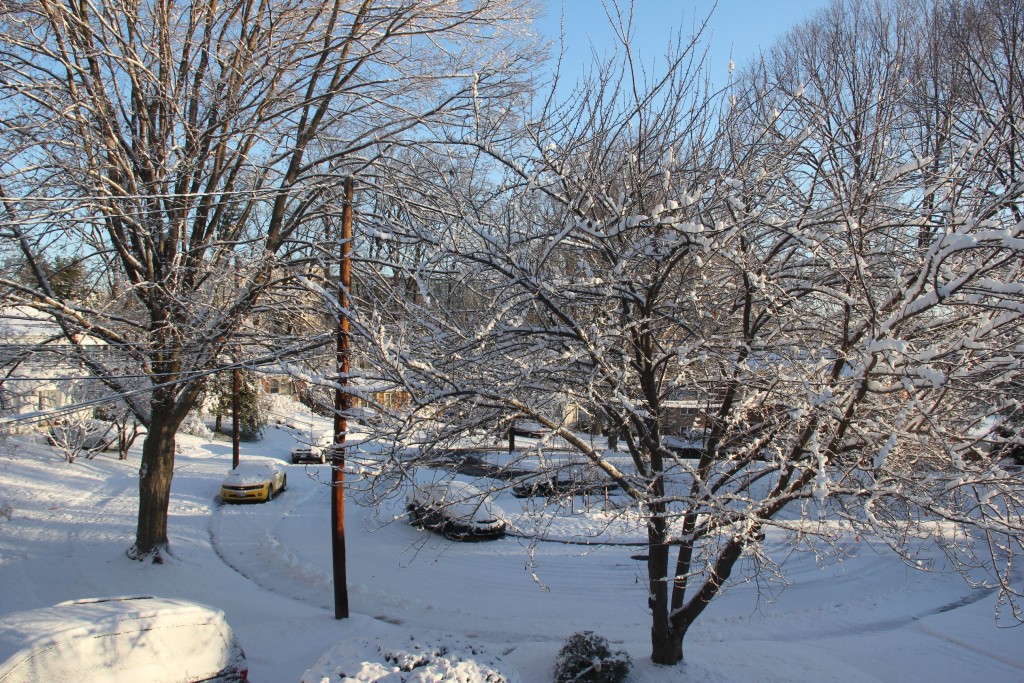
Difference #20
One difference that I can’t fail to mention: it looks just like in a Disney movie after it snows here. Beautifully clear, clean, lovely. In Germany, everything turns so quickly to sludge.
An Opportunity for German Manufacturers
Homes in the US, south of New York, could be better insulated and heated differently. Windows don’t have the roller shutters that German homes do, which help keep out the cold. Streets could be de-iced with a sand mixture. Cars need winter tires and drivers need training to drive in snow (okay, in general they need training, not just in the winter). And it’s time that Washingtonians acquaint themselves with sturdy, thick, warm winter boots.
Just imagine how Mike or John might climb out of his German SUV in his high-tech German shoes and shovel the path of snow to his home. Then, he opens the front door, enters a nicely warmed house, lowers his electric German roller shutters (they have got to be electric!), and sips an ice-cold Coca-Cola with ice cubes in front of the fireplace. How could he complain about any of that?
Can you think of any others? Add to this list with a comment below!





I know I am late and randomly stumbled here.
I live in the north east specifically in PA mountains and you really are overgeneralizing the US and how we are with snow. Where I live 6 inches of fresh snow on the road and most schools will still be in session, the difference here is it is up to the parent if they wish to release their child to school on a potentially hazardous day. What happens is the children get a set number of built in snow days on the car set school year and less used either by parents or by the school the sooner that child gets to be released for summer break.
Same thing for work to a certain degree. They have to be most business if I can’t make it hold nothing against you. But you’ll get playfully picked on cuz everyone is rough and used to it. That being said if ur office is run remotely from Florida, as my best friend’s last job was and they don’t understand snow and wanna give you trouble for your crew being unable to show.. show them your car is physically burried and just say “good luck on that boss, wanna dig me out so I can get there?”
You are right. The title is misleading, it’s a comparison between Washington and Germany.
the only “climate change” is the heavy metals from the spraying of our skies. The last few years have not been as heavy but during 2014-2016 they sprayed every day here in Oregon and looking at 1 pacific redwoord comments they’ll have sprayed from California up to BC. now it’s just limited spots and when rain is due thus the rain “magically” evaporates…………………geeeez I wonder why.
The heavy metals causes water droplets to break apart as they approach and makes lows spin clockwise destroying themselves thuus “weakening fronts” in the revised caretoon forecast. I miss the more realistic weather imagery.
These lows usually counterclockwise in the N Hemisphere and then curve NE on the coastline where ever the jet stream is and in Jan-Marc many from GOA bringing the 1,000 foot or lowering snow levels: the stupid media will then say it will be 36F and an inch of snow tonight. it doesn’t happen at those temps you dufus! end result is usually clear and cold with not a flurry to be seen.
our best snows come at the end of a cold wave if highs are in the 20s. 2013 was a weird exception but they were spraying during it.
6 years later, are the forecasts getting better?
I’m not even sure how i stumbled upon your post here but kind of by accident looking up things about winter in Germany! Living in the NE US, NJ I can say you’re right on about the salt :(. In my area they use a brine (salt + water) on the roads when the temps go low before storms. We have white lines on the roadways. The sidewalks/driveways are salted by home owners, etc. Bad for the environment.
I watch a lot of old movies and i can tell you that people used to dress very warm in the winters with appropriate winter wear. Something has changed in this country regarding how we dress in the cold. My neighbors are from the Netherlands and I realized this difference when i saw how they dress their children in winter. This is how it was in the US a long time ago.
Also, houses built here a long time ago were built with brick and very strong to last forever. New houses here are built large and not so strong. The heat in the newer homes is not good and mostly forced hot air from vents that just does not feel warm. I grew up in a house built in the 50’s and it had radiant heat in the floor which was wonderful!!!
Thank you Nicole for sharing your experience. Newer is not always better!
You shouldn’t overgeneralize from Washington to the US. I am not a weathercaster but likely the difference in impact and size of areas hit by snow storms is dependent on weather patterns. The reason that it is hard to forecast weather in the Washington area is because of the impact of the Gulf stream, which warms the area in a manner disconnected from continental weather conditions. The Gulfstream/coastal effect contributes to how weather patterns move through the region and why snow events can connect cities along the coast from DC to Boston.
The Gulf stream effect is also why when snow is predicted it often doesn’t happen–since decisions about closing schools and government offices are made between 3am and 4am based on forecasts. Likely in places like Chicago or Detroit, the chances of the forecast being right are 90% or greater. Not in Washington.
That being said, yes, planning for snow isn’t that great. Part of the reason there isn’t “enough” equipment is that it doesn’t snow frequently enough to buy more equipment, at say the level required for a city like Montreal.
FWIW, in terms of planning and winter weather, I write about it every year:
http://urbanplacesandspaces.blogspot.com/2015/12/planning-for-winter-weather.html
Thanks Richard for this explanation. This is my third winter in DC, and I get used to the hysterical media! I wrote this post last year, while Jonas winter storm seems to develop as a real threat for the area. Honestly, I should probably write more about how Americans build houses. When the US get hit by a tornado, or a hurricane, images are quite spectacular when you look at them from Europe. Once you live here and see that houses are built with wood, you don’t wonder anymore. In Europe, we build houses with bricks, stones and mortar. They are supposed to stand for 100 years, at least…
As an American who grew up in Michigan (read: cold, snowy winters) and now lives in the very mild Pacific Northwest, this is such a relatable list. There was an ice storm in Portland last year and it shut the city and transport down for 3 days, all over an inch or two of snow and some ice. While the city wasn’t prepared for clearing ice and snow (they really just waited until it melted), I was surprised by how the people responded. The bars were lined with cross country skis leaning against their walls. No one in lower Michigan would ever ski somewhere outside of a resort town! And whereas Michigan uses salt on the roads, Portland uses sand. Perhaps it has to do with heightened awareness of the salmon breeding grounds here in the PNW.
One thing’s for certain: if the East Coast continues experiencing heavier snow and colder winters due to climate change, they’ll have to adopt some of those suggested technologies and habits!
Jos, I see that D.C. has still some potential… like skiing on Wisconsin Ave. to a trendy bar in Georgetown!